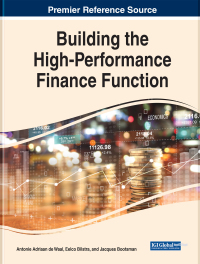Question
During the last few years, ABZ Corporation has been too constrained by the high cost of capital to make many capital investments. Recently, though, capital
During the last few years, ABZ Corporation has been too constrained by the high cost of capital to make many capital investments. Recently, though, capital costs have been declining, and the company has decided to look seriously at a major expansion program that has been proposed by the marketing department. Assume that you are an assistant to Mary Mitchell, the financial vice president. Your first task is to estimate ABZ's cost of capital. Mitchell has provided you with the following data, which she believes may be relevant to your task:
(1) The firm's tax rate is 37%.
(2) The current price of ABZ's 13% coupon, semiannual payment, noncallable bonds with 18 years remaining to maturity is $1,200.55. ABZ does not use short-term interest-bearing debt on a permanent basis. New bonds would be privately placed with no flotation cost.
(3) The current price of the firms 12%, $100 par value, annual dividend, perpetual preferred stock is $159.56. ABZ would incur flotation costs equal to 6% of the proceeds on a new issue.
(4) ABZ's common stock is currently selling at $67 per share. Its last dividend (D0) was $4.02, and dividends are expected to grow at a constant rate of 6.2% in the foreseeable future. ABZ's beta is 1.34, the yield on T-bonds is 4.3%, and the market risk premium is estimated to be 5.8%. For the own-bond-yield-plus-judgmental-risk-premium approach, the firm uses a 3.1% judgmental risk premium.
(5) ABZ's target capital structure is 26% long-term debt, 8% preferred stock, and 66% common equity.
d. (1.) What are the two primary ways companies raise common equity?
(2.) Why is there a cost associated with reinvested earnings?
(3.) ABZ doesnt plan to issue new shares of common stock. Using the CAPM approach, what is ABZ's estimated cost of equity?
| The CAPM Approach | ||||
| rs = Risk-free rate + (Market risk premium) (Beta) | ||||
| rs = rRF + (RPM) bi (Note: RPM is the expected return on the market minus the risk-free rate.) | ||||
| Risk-free rate | ||||
| Expected market risk premium | ||||
| Beta | ||||
| rs = | rRF | + | (RPM) | (bi) |
| rs = | + | |||
| rs = | + | |||
| rs = | ||||
| THE DISCOUNTED CASH FLOW APPROACH | ||||
Step by Step Solution
There are 3 Steps involved in it
Step: 1

Get Instant Access to Expert-Tailored Solutions
See step-by-step solutions with expert insights and AI powered tools for academic success
Step: 2

Step: 3

Ace Your Homework with AI
Get the answers you need in no time with our AI-driven, step-by-step assistance
Get Started


